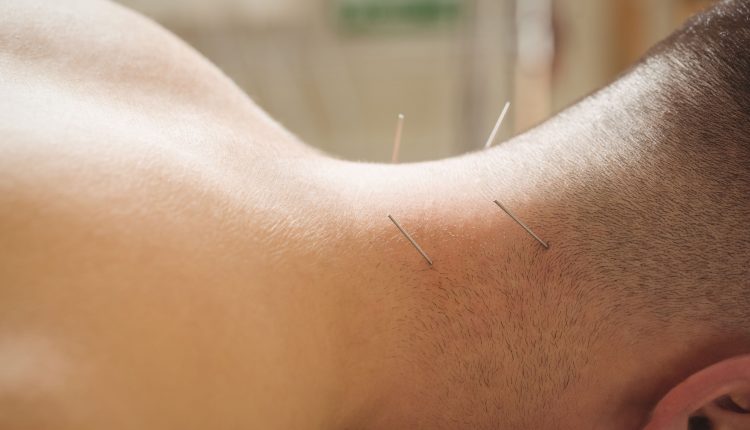Unlocking Pain Relief: Exploring Physical Therapy Acupuncture Training

In the realm of pain treatment and holistic healthcare, acupuncture has emerged as a powerful therapeutic approach. This ancient practice, rooted in traditional Chinese medicine, has gained widespread recognition for its potential to alleviate pain, enhance wellness, and restore balance within the body. As acupuncture finds its place within modern medical practices, the need for qualified practitioners continues to grow. In this article, we delve into the world of Physical Therapy Acupuncture Training, exploring its benefits, requirements, and the transformative impact it has on patient care.
The Power of Acupuncture in Pain Management:
Acupuncture is a treatment method that involves the insertion of thin needles into specific points on the body. These acupuncture points, also known as acupoints, are believed to correspond to energy pathways or meridians. By stimulating these points, practitioners aim to rebalance the flow of energy (Qi) and promote the body’s natural healing mechanisms.
One of the most remarkable aspects of acupuncture is its efficacy in pain relief. From chronic conditions like low back pain, osteoarthritis, and migraines to musculoskeletal injuries and even emotional distress, acupuncture has demonstrated its potential to offer relief and improve the quality of life for countless patients.
Bridging the Gap: Physical Therapy Acupuncture Training:
The integration of acupuncture into physical therapy practices has given birth to a unique hybrid discipline known as Physical Therapy Acupuncture. This approach combines the specialized skills of physical therapists with the therapeutic principles of acupuncture. It equips practitioners with a comprehensive toolkit to address pain, injuries, and a wide range of health conditions.
To become proficient in Physical Therapy Acupuncture, practitioners undergo rigorous training and education. This involves mastering needling techniques, understanding the body’s anatomy, and acquiring a deep knowledge of acupuncture points and their therapeutic effects. This training is essential to ensure safe and effective practice, as well as to provide patients with evidence-based care.
Training and Certification Requirements:
The journey towards becoming a skilled Physical Therapy Acupuncturist requires meeting specific educational and certification requirements. Aspiring practitioners typically pursue a master’s degree in Acupuncture or Oriental Medicine from an accredited school. This comprehensive education covers acupuncture techniques, traditional Chinese medicine principles, and thorough clinical training.
Certification is another vital milestone on this journey. Certification requirements vary by state and organization but often involve passing national board exams, such as those administered by the National Certification Commission for Acupuncture and Oriental Medicine (NCCAOM). These exams assess knowledge in areas like acupuncture theory, point location, and safety protocols.
The Synergy of Acupuncture and Physical Therapy:
The synergy between acupuncture and physical therapy offers patients a comprehensive approach to healing. While physical therapists are experts in musculoskeletal function and movement, Physical Therapy Acupuncturists possess the added ability to address pain at its source through needling techniques. This combined expertise allows practitioners to create tailored treatment plans that optimize patient outcomes.
Research into the effects of acupuncture has yielded promising results. Systematic reviews have shown acupuncture’s potential to reduce pain, improve functional mobility, and contribute to overall well-being. The practice has been embraced by medical doctors, family physicians, and healthcare professionals as a complementary therapy that aligns with a patient-centered approach.
Beyond Pain Management: Expanding Horizons of Care:
Physical Therapy Acupuncture goes beyond pain management, embracing a holistic approach to health and wellness. Practitioners may utilize acupuncture to address a wide spectrum of conditions, from depression and anxiety to smoking cessation and rehabilitation. This versatile practice underscores the interconnectedness of physical, emotional, and mental well-being.
Exploring New Avenues of Research:
The field of Physical Therapy Acupuncture is not static. Ongoing research continues to shed light on its mechanisms, benefits, and applications. Studies investigating the effects of acupuncture on various conditions, from knee injuries to headaches, contribute to evidence-based practices and informed decision-making in patient care.
Empowering Patients through Shared Decision-Making:
One of the cornerstones of Physical Therapy Acupuncture is shared decision-making. Practitioners collaborate with patients to understand their unique needs, preferences, and treatment goals. This patient-centered approach ensures that treatment plans are personalized, effective, and aligned with the patient’s holistic well-being.
The Way Forward:
As acupuncture takes its place in modern healthcare, the demand for trained Physical Therapy Acupuncturists continues to rise. These professionals bridge the gap between ancient wisdom and contemporary medical practices, providing patients with a comprehensive and integrative approach to healing.
In conclusion, the fusion of acupuncture and physical therapy creates a dynamic and impactful discipline known as Physical Therapy Acupuncture. This approach empowers practitioners to address pain, enhance wellness, and promote holistic health through evidence-based practices. As research advances and awareness grows, Physical Therapy Acupuncture is poised to play an integral role in shaping the future of pain management and healthcare.


Comments are closed.